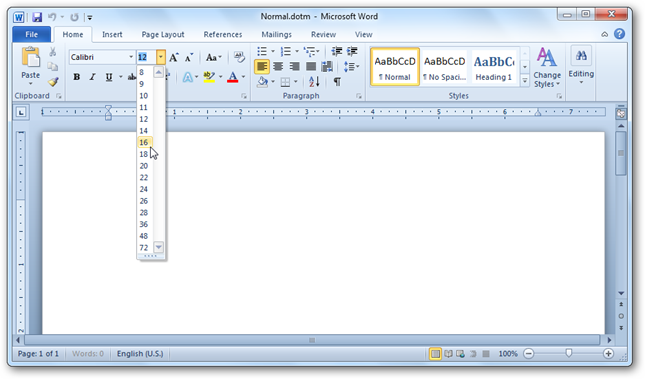
- MS WORD CHANGE DEFAULT STYLE HOW TO
- MS WORD CHANGE DEFAULT STYLE UPDATE
- MS WORD CHANGE DEFAULT STYLE WINDOWS
Then choose the “Reset to Theme from Template” command from the drop-down menu to revert your document back to the default theme for its related document template. Then click the “Themes” drop-down button in the “Document Formatting” button group.
MS WORD CHANGE DEFAULT STYLE HOW TO
Instructions on How to Remove a Theme in Word Here are several other tweaks for Microsoft Office that you can do in just a few minutes. Each time when you create a new MS word document you have to adjust the font type, font style, font size, colour of the font, the effect of fonts and many.

MS WORD CHANGE DEFAULT STYLE WINDOWS
Other common problems with Windows PCs can also be solved with 5-minute fixes. Select the text with the formatting you want to clear. Finally, to make this style permanent for new documents, in the Word ribbon click Change Styles and Set as Default.The Theme colors display your current color palette. To make sure this document and all new created documents will have the changes make sure to select. In the Manage Styles dialog box click on the Set Defaults tab and make the changes to the fonts, line and paragraph spacing. At the bottom of the menu click on the Manage Styles icon. Notice how there are Theme colors, and Standard Colors. You can also use the key combination of Alt+Ctrl+Shift+S. One of the easiest ways to check your current palette is to visit the Home tab, Font group, and click on the dropdwon arrow next to the Font Color. Where is the theme colors palette in Word? The following instructions show you how to modify Normal style using the example of setting the font to Times New Roman, 12-point font with 0 space after paragraphs. To apply your theme in another document, on the Design tab, click Themes, and then select the theme from the Custom section. Select All documents based on the Normal. This will set the font you’ve selected as the default font for all future documents. In the Save Current Theme dialog box, type a name for your new theme and click Save. Once you have made your changes, click the Set as Default button. On the Design tab, click Themes, and then click Save Current Theme. To customize that theme, you can change its colors, fonts, and effects as needed, save them with the current theme, and make it the default theme for all new workbooks if you want. To switch to another theme, click Page Layout >. How do I change the theme of my workbook? Click the More down arrow on the bottom right. Click the Table Tools Design or Table Design tab in the Ribbon. Make any changes that you want to the fonts, margins, spacing, and other settings. Set a default table style Click in the table. Go to C:Usersuser nameAppDataRoamingMicrosoftTemplates. Choose the font style and size you would like Word to use by default (e.g., Times New Roman, Size: 12).From the lower-right corner of the ".Font".This is where you set the two Styles I told you about earlier, +Body and +Headings, which in turn control. Open a new or existing Microsoft Word document. On the left, youll see Heading font and Body font.How do I change the default font size in Word? Hover the mouse over a theme to see a live preview of it.Save the file to Appdata\Microsoft\Templates. Create a blank file that is configured by using the font and styles that you want to set as the default. I hope you enjoyed our article about how to change the Microsoft Word default font. There are no direct Group Policy Objects (GPOs) to set the default font in Word (for both Microsoft 3). Although you will be able to change the typeface in the current document, the next time you create a new blank document, the font will automatically be set to Calibri. Note that you cannot change the default font if you are using Word Online. If you only want to change the typeface in the open document, follow the same instructions but choose the “This document only” option in step 5. The default font will now be changed in the open document and any future blank documents you create.
MS WORD CHANGE DEFAULT STYLE UPDATE


 0 kommentar(er)
0 kommentar(er)
